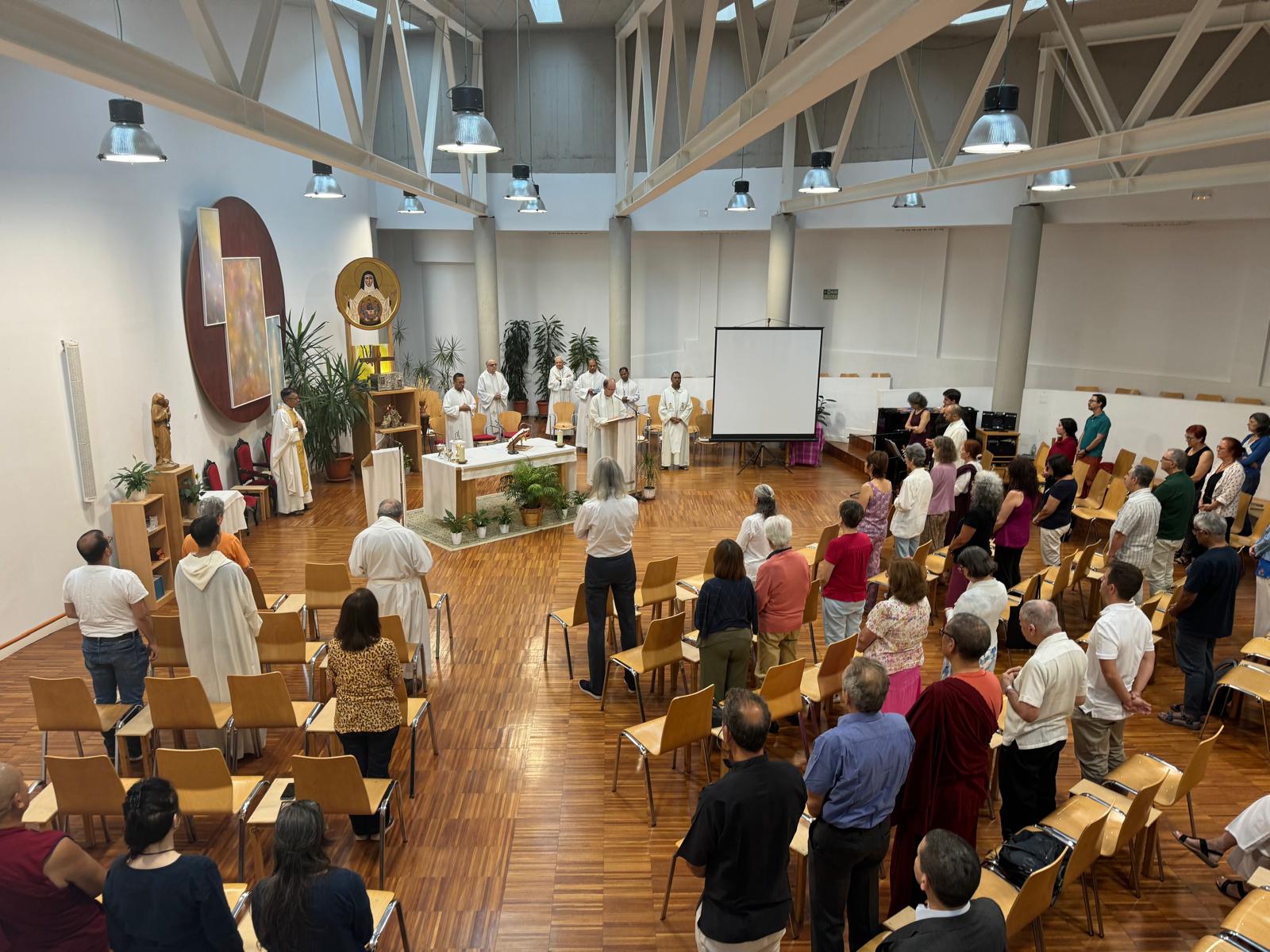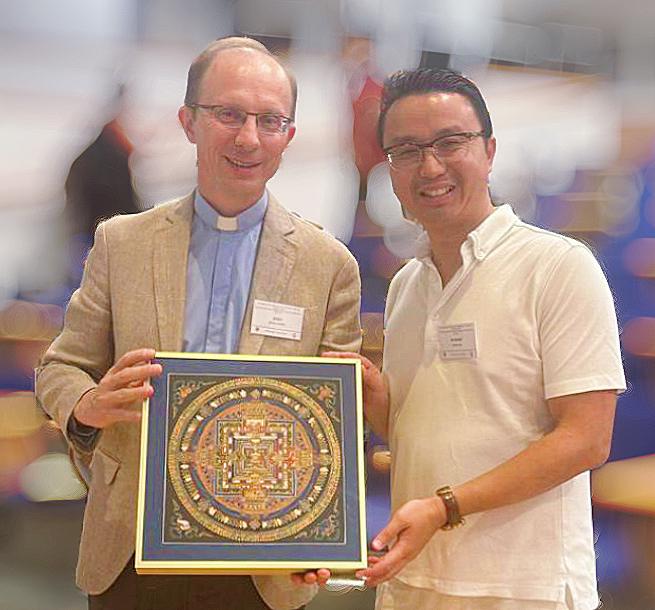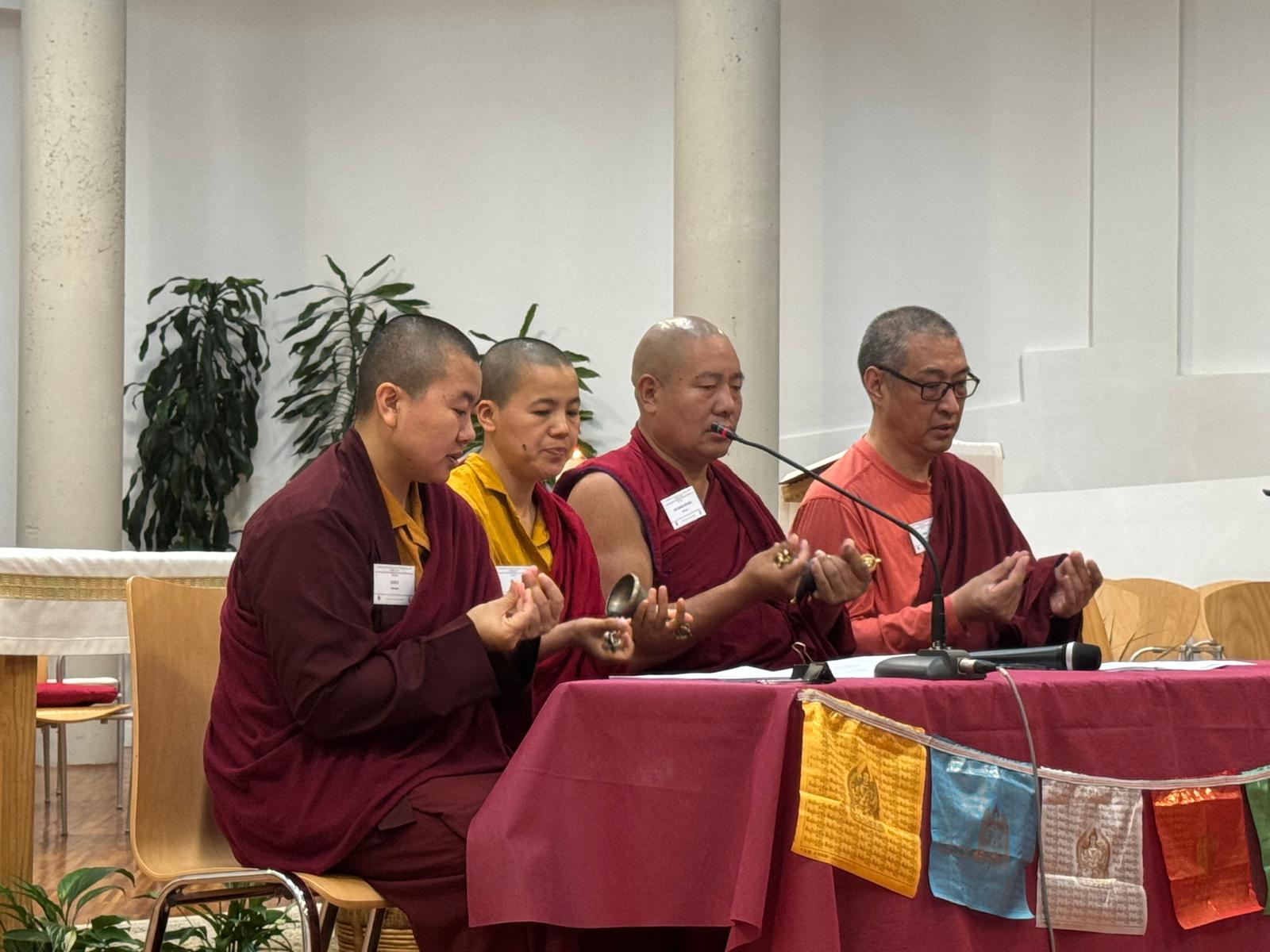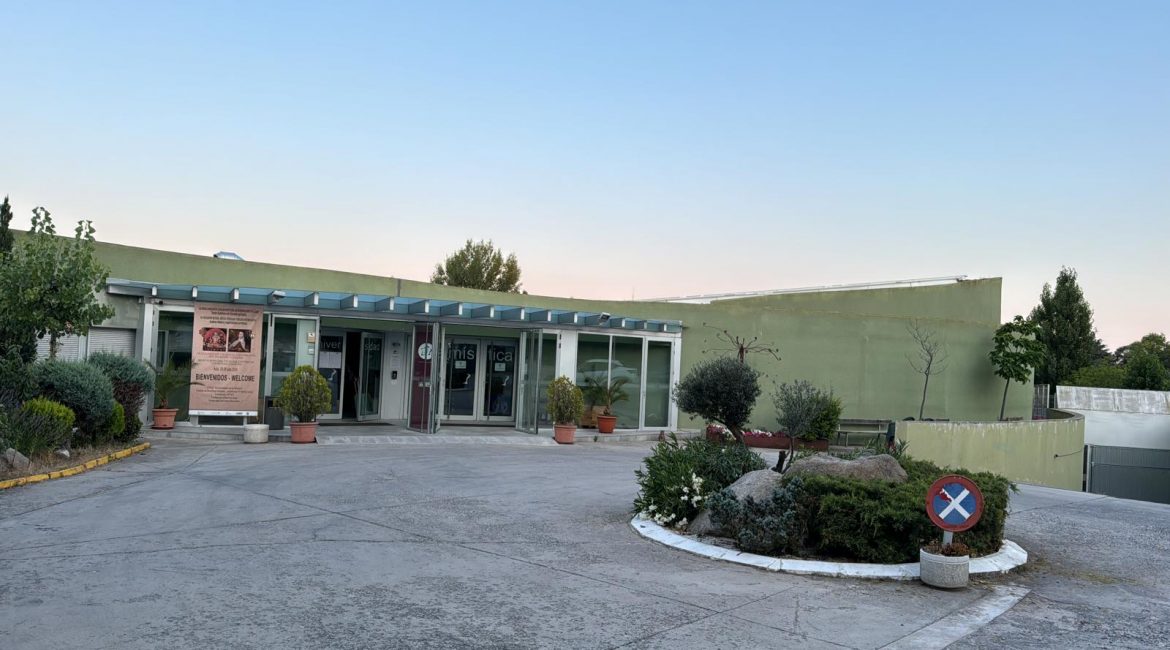Under the bright and baking Avila sun, CITeS, which is more formally known as the International Teresian-Sanjuanist Center, opened its doors for “Orientations for Visualizing, Contemplating and Discerning the Sacred,” the Vajrayana-Catholic theme for “3rd World Meeting Teresian Mysticsm and Interreligious Dialogue.”
The afternoon of the 25th opened with two speeches from the respective heads of CITeS and the University of Hong Kong’s Centre of Buddhist Studies (CBS), Dr. Jerzy Nawojowski, OCD (director of CITeS), and Dr. Georgios Halkias (director of CBS). Both learned and eloquent leaders made clear the stakes of the dialogue and why such encounters, despite their own difficulties and internal tensions, were essential for humanity.

I had the good fortune to present a small gift of a mandala art to Dr. Nawojowski, who seemed pleased by this striking divine representation of an Indian fortress. The gradual “moving into” the center, where the deity dwells, seems to have some resonance with the many mansions of the house of God, a New Testament idea which Teresa built upon with her spiritual memoir-autobiography, Seven Mansions. The evening continued with Dr. Saverio Cannistrà’s introduction to the Carmelite order, and concluded with an outline of the base, path, and fruit of Vajrayana practice with Dr. Phuntsok Wangchuk.

On the 26th, attendees were treated to a Carmelite, Spanish-English mass early in the morning, followed by a series of chants, including a Green Tara puja, by Khenpo Yeshi, Ven. Khenpo Kelsang Nyima (abbot of Rumtek Monastery in Sikkim), and two Bhutanese female monastics. This was the first full day of the conference, with speakers paired up and presented by moderators. Sister Maria José Perez, Dr. Catherine Hardie, and Dr. Francesc Torradeflot Freixes gave talks about the virtues found in the ethical structures of Vajayrana and Catholic thought.
The afternoon had lectures by Dr. Juan Antonio Marcos Rodriguez, OCD, and one of my favorites, Dr. Klaus Dieter-Mathes, who discussed the visualization of deities, the ultimate purpose of the subtle winds (pranas), and Vajrayana history. Dr. Francisco Diez de Valasco Abellán highlighted the commonalities and divergences between meditation, which involves looking inward, and prayer, which is directed outward to a higher force. In the evening, we were treated to a tonglen workshop by Ven. Khenpo Kelsang Nyima. His teaching of tonglen, as well as his almost child-like joviality, delighted the mostly local-born Buddhists as well as foreign attendees affiliated with the Dharma.

The 27th, the last full day of the conference, promises to be a showcase of the best from each faith tradition. Fr. Francisco Brãndle will discuss the Carmelite perspective’s mystical visions and divine encounters, before being matched by Dr. Halkias with a talk about mystics’ visions. Dr. Xavier Pikaza Ibarronodo will present a comparative look at Halkias’ and Brãndle’s lectures. The winners of an essay competition about Christianity and Buddhism will also be announced (IV International Prize Teresa of Jesus and Interreligious Dialogues), before Myrna Torbay leads a workshop on Teresian meditation.
Related features from BDG
Tibetan Buddhism and Carmelite Spirituality: An Inter-religious Meeting in Ávila, July 2024
Related blog posts from BDG
Beyond mere goodwill: Keeping authenticity in interfaith dialogues in Avila


